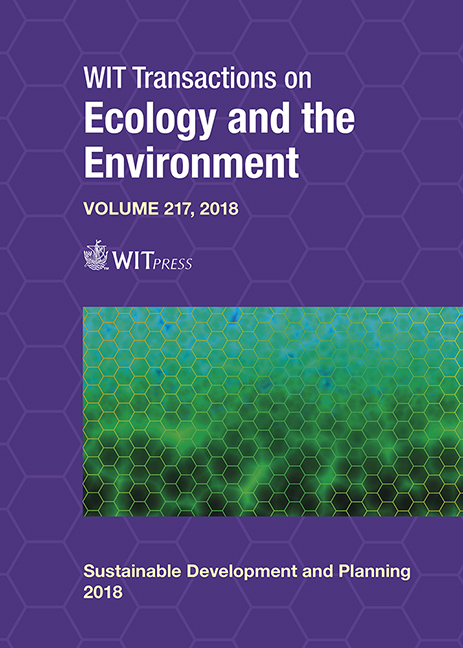THE IMPLEMENTATION OF LIFE CYCLE ANALYSIS AND SIX SIGMA METHOD TO ACHIEVE SUSTAINABLE WATER CONSUMPTION IN THE AGRICULTURAL SECTOR
Price
Free (open access)
Transaction
Volume
217
Pages
12
Page Range
337 - 348
Published
2018
Size
981 kb
Paper DOI
10.2495/SDP180311
Copyright
WIT Press
Author(s)
KARIN KANDANANOND
Abstract
Generally, water is regarded as one of the most important resources in every aspect of life. The reduction of water consumption is a crucial issue for both business and environmental perspectives. This study focuses on the integration of life cycle analysis (LCA), six-sigma, and water footprint method to reduce the water consumption in the agricultural sector. The scenario utilized in this study is the water management in the rice production process. The life cycle analysis and water footprint are used to effectively quantify the water consumption of each production activity covering the analysis scope from cradle to gate. The analysis is based on the type of water footprints which are differentiated into green, blue, and grey. Green and blue water footprint are the rainwater and irrigation water required to grow paddy rice while grey water footprint is the amount of polluted water caused by the production. Afterwards, the main tool of six-sigma, DMAIC (define, measure, analyze, improve, and control), is implemented to reduce the water footprint. The measurement stage shows that the proportion of water use falls in these categories, farm water (93.4665%), polluted water (6.4196%), transportation (0.1135%), and milling (0.0003%). Since rice is the semi-aquatic plant so the reduction of farm use water is likely to be impossible, the spotlight is on the polluted water accounted for the second highest water consumption and it is caused by the fertilizer use. Therefore, the cause-and-effect diagram deployed in the analyze phase points out that the utilization of the green manure from the cover crops should be used in conjunction with the tradition fertilizer use. In the improvement phase, after the intervention measure is implemented, through the simulated calculation, the experimental design method statistically shows that the amount of grey water footprint is significantly reduced. To ensure the sustainability of the improvement, the individual X control chart will be applied to monitor the value of grey water footprint in the control stage.
Keywords
DMAIC, life cycle analysis, rice, six-sigma, sustainability, water footprint





